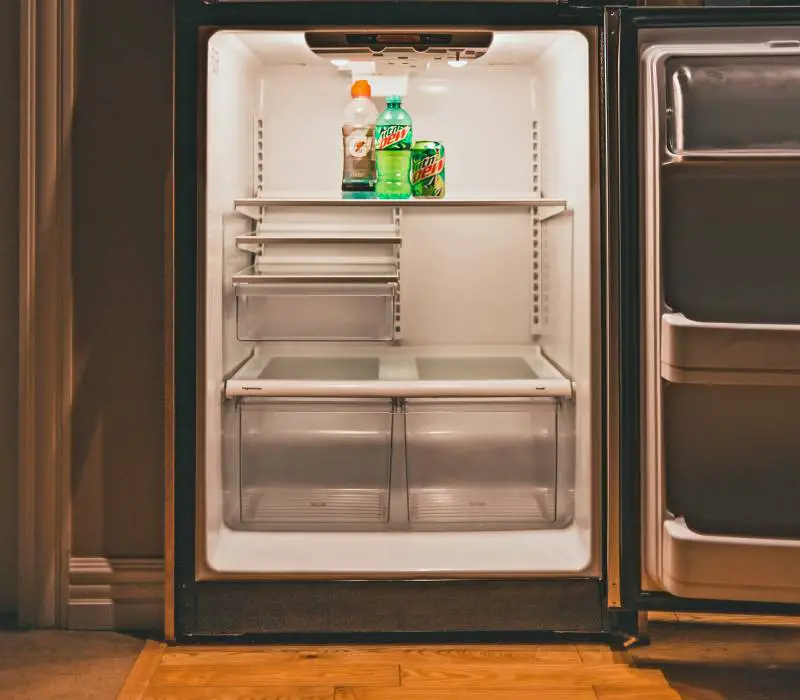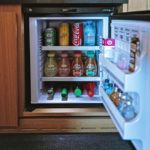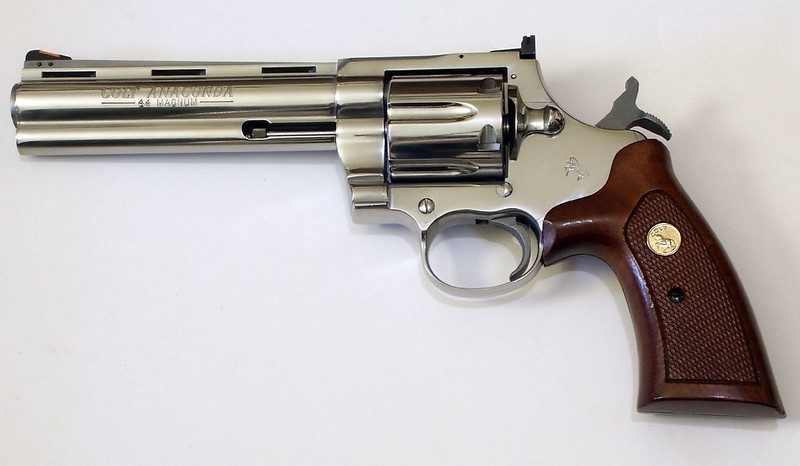Table of Contents
The ice maker plays a vital role in the refrigerator. A fridge is crucial to help you store your food and maintain its freshness until eaten. An ice maker consists of a water line, ice mold, and other moving parts to make it all work.

Like any other mechanical work, ice makers don’t work all the time. Sometimes they don’t work due to malfunction.
If the ice maker isn’t working, the first step is to identify the reason before considering repairs or replacement.
There are so many possible reasons why refrigerator ice makers are not getting water. But most typically, you can fix yourself at home.
But if you have no experience resolving an electrical problem, it is better to ask for professional help.
13 Reasons Why Refrigerator Ice Maker Not Getting Water and How To Fix This Problem
This article will discuss the most common issues that cause the refrigerator ice maker not to get water. You’ll also learn how to fix this problem.
If your ice maker is not getting water, a simple fix sometimes works. Ensure to unplug your refrigerator and turn off the power supply line before inspecting.
Most refrigerators today come with an added feature like an icemaker, which is convenient for you.
But the problem is when the ice maker is not getting water. Fixing an ice maker that’s not getting water is a method of exception.
1. Mechanical or Electrical Problem
Most ice makers have a control arms feature that stops the production when the ice bin gets full. Check the manual information and ensure that it is not enabled.
Check the ice maker. If you see ice inside the ice mold, then it is working correctly. The problem is not a water supply but a mechanical or electrical problem.
If you’re trying to rearrange things, there’s a big chance to accidentally touch or push the control arm into a different position that stops producing ice.
To fix this, find the metal control arm and move it to the down or on position.
2. Ice Maker isn’t Working
Ensure that the ice maker is on and working correctly. Use a multimeter to check if the ice maker is getting power. You can also check the ice maker’s power cable.
The cord should be plugging in at the back of the refrigerator or the left side of the freezer section.
If the ice maker has a power switch, check to see if it is on. If it is not, turn it on. But if it is, turn it off and turn it back on.
Allow the icemaker about 24 hours to check if it begins making ice. If it does, it means water is now receiving into it.
3. The Water Filter isn’t Working
The water filter is an integral part of the refrigerator. It cleans the water and makes it delicious by keeping all the minerals.
It also plays a crucial role in maintaining the continuous water supply to the dispenser.
If you notice a change in taste, it is probably because the water filter has become faulty.
Everything that has been filtered out of your tap water before it becomes ice will clog your filter over time.
Check the refrigerator’s filter. If there is no filter or if it is clogged, the ice maker doesn’t get water.
Try sliding the filter into the fridge housing and then push and twist the filter to lock it appropriately in its position.
Ensure that your filter is in place. The lifespan of the filter depends on the frequency of usage. But If it still hasn’t changed in more than six months, consider replacing it with a new one.
Suppose you have a new water filter and notice there is a leakage in the ice maker. Consider checking the water pressure. Reducing water pressure can fix this issue.
4. The Water Supply is Leaking
The water line to your ice maker is essential to making quality ice. If the water line is clogged, water can’t come out and doesn’t produce ice.
Check the refrigerator water supply if it’s leaking. The water supply line is typically a one narrow-diameter copper line working to the refrigerator.
The valve is generally underneath your kitchen sink and behind the fridge. If you notice that there is no moisture on or around the valve, it indicates no leaks.
If a water line is cracked or has a broken seal, leaks can form a wet or frozen mess.
5. Ice Stuck in the Mold
One of the common problems with an ice maker is crooked and fractured ice due to the pieces of ice stuck in the ice mold.
If there is a lot of ice stuck, then no new ice will produce, and the water line might be creating a problem since it can’t fill ice.
To fix this, turn off the ice maker (flip up the fill bar) and use a pitcher to cover the ice maker tray in warm water gently.
The warm water will melt all the stuck bits of ice without any chemicals going to your ice tray. Ensure that your ice bin is clean so that no liquid water or crooked ice will remain on your tray.
6. Valve is not Open
Turn the supply valve to make it fully available and wait for approximately an hour. If the ice maker produces ice, then the problem is the unopened valve.
7. Ice Blockages Inside the Plastic Water Lines
Inspect the plastic water lines running from the water valve. There may be either one or two usually placed at the back of the refrigerator behind the access panel.
The panel can be detached using a screwdriver. Straighten any noticeable tangles and inspect if there are any blockages, such as ice inside the lines.
8. Ice in the Power Lines
Disconnect the refrigerator’s power cable if you notice ice in the power lines. Open the freezer door to defrost the fridge and freezer.
Clear the freezer by removing all the frozen foods and clean the bottom of the freezer cavity using a towel.
9. Ice in the Ice Maker Bin
Remove any ice in the ice maker bin and clean the sections with a warm, wet cloth.
10. Missing or Loose Drain Cap
Tighten the drain cap, which is on the ice maker’s water pan. If this is lost or loose, your ice maker will get little or no ice.
11. There is a Block of Ice in the Water Supply Tube
Apply heat to the water supply tube to melt any ice that might be frozen inside. You can use either a hairdryer on its lowest heat or a warm, wet cloth.
Use a hairdryer with a back and forth movement as you warm it.

12. Water Coming from the Tube
Continue to apply heat until you can’t see any more water coming from the line. Plug your refrigerator back in, move it back to when it’s placed, and put back the frozen items in the freezer.
13. The Ice Maker is not On
Ensure the ice maker is on and wait for about 2 hours for it to start making ice.
When Should I Contact A Technician?
If you can’t solve this problem or you are uncomfortable handling this procedure, you can contact an expert technician to solve your problem.
The seal tube coming into the ice maker can sometimes freeze, preventing water from getting to the ice maker. The unit must be pulled out and examined and thus should be done by a professional.
The ice maker is one of the essential appliances in your home. Diagnosing the problems and learning how to fix them can save you a lot of time and money.
If you encounter any of the situations mentioned below and you can’t fix them, contact an expert technician to help you.







![Why Is My Standing Fan Making Noise? [Top Reasons] Why Is My Standing Fan Making Noise? [Top Reasons]](https://homesteadandprepper.com/wp-content/uploads/2021/10/Why-Is-My-Standing-Fan-Making-Noise-150x150.jpg)
